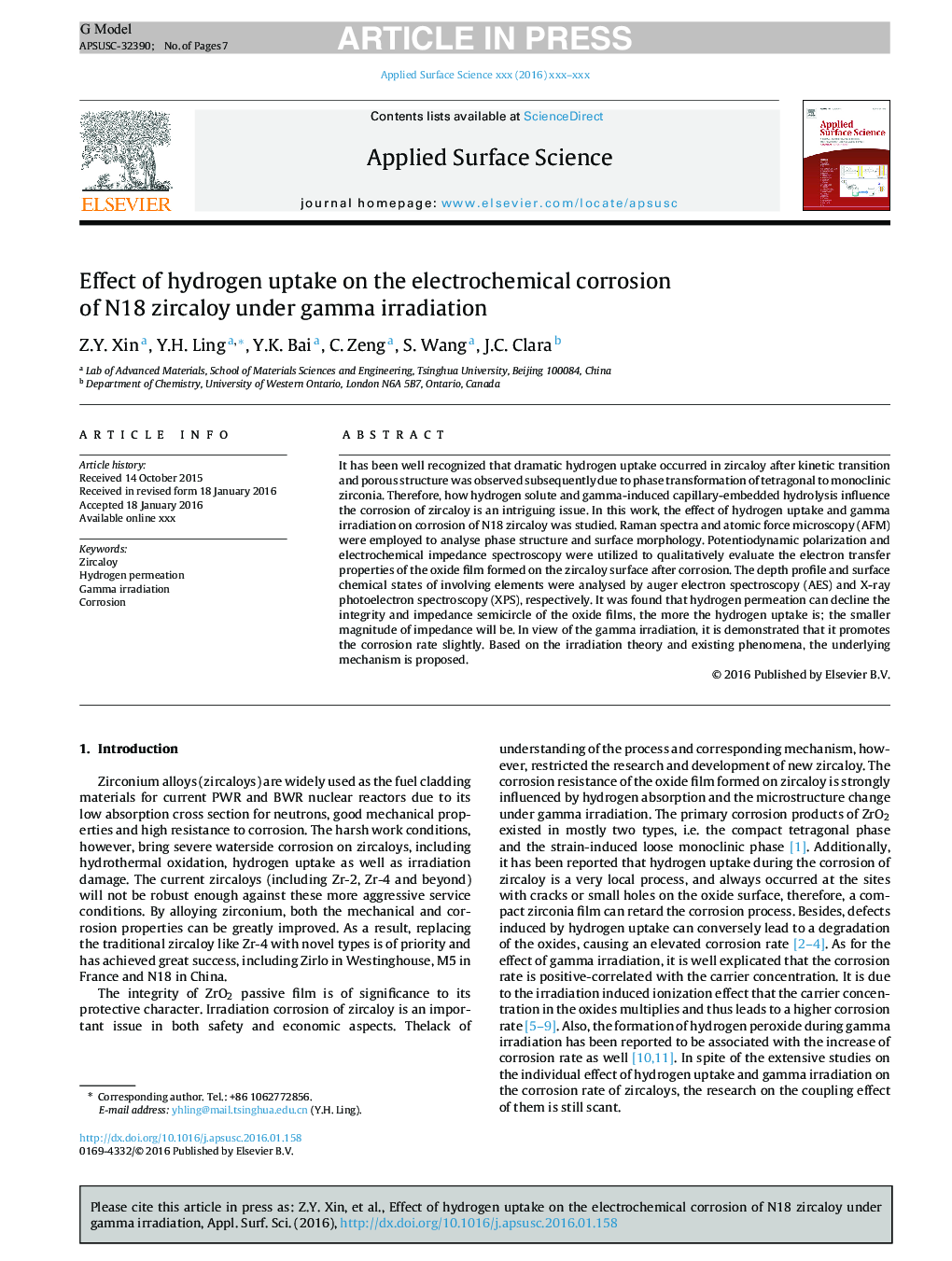| کد مقاله | کد نشریه | سال انتشار | مقاله انگلیسی | نسخه تمام متن |
|---|---|---|---|---|
| 5348536 | 1388083 | 2016 | 7 صفحه PDF | دانلود رایگان |
عنوان انگلیسی مقاله ISI
Effect of hydrogen uptake on the electrochemical corrosion of N18 zircaloy under gamma irradiation
دانلود مقاله + سفارش ترجمه
دانلود مقاله ISI انگلیسی
رایگان برای ایرانیان
کلمات کلیدی
موضوعات مرتبط
مهندسی و علوم پایه
شیمی
شیمی تئوریک و عملی
پیش نمایش صفحه اول مقاله

چکیده انگلیسی
It has been well recognized that dramatic hydrogen uptake occurred in zircaloy after kinetic transition and porous structure was observed subsequently due to phase transformation of tetragonal to monoclinic zirconia. Therefore, how hydrogen solute and gamma-induced capillary-embedded hydrolysis influence the corrosion of zircaloy is an intriguing issue. In this work, the effect of hydrogen uptake and gamma irradiation on corrosion of N18 zircaloy was studied. Raman spectra and atomic force microscopy (AFM) were employed to analyse phase structure and surface morphology. Potentiodynamic polarization and electrochemical impedance spectroscopy were utilized to qualitatively evaluate the electron transfer properties of the oxide film formed on the zircaloy surface after corrosion. The depth profile and surface chemical states of involving elements were analysed by auger electron spectroscopy (AES) and X-ray photoelectron spectroscopy (XPS), respectively. It was found that hydrogen permeation can decline the integrity and impedance semicircle of the oxide films, the more the hydrogen uptake is; the smaller magnitude of impedance will be. In view of the gamma irradiation, it is demonstrated that it promotes the corrosion rate slightly. Based on the irradiation theory and existing phenomena, the underlying mechanism is proposed.
ناشر
Database: Elsevier - ScienceDirect (ساینس دایرکت)
Journal: Applied Surface Science - Volume 388, Part A, 1 December 2016, Pages 252-258
Journal: Applied Surface Science - Volume 388, Part A, 1 December 2016, Pages 252-258
نویسندگان
Z.Y. Xin, Y.H. Ling, Y.K. Bai, C. Zeng, S. Wang, J.C. Clara,